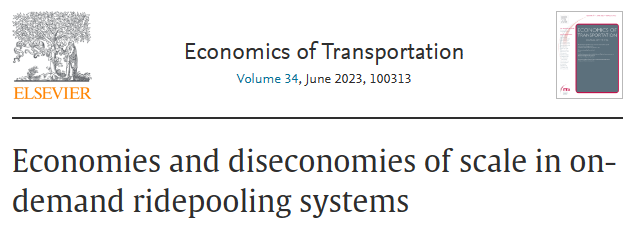Andrés Fielbaum, Alejandro Tirachini, Javier Alonso-Mora
Abstract
We analyse the sources of economies and diseconomies of scale in On-Demand Ridepooling (ODRP), disentangling three effects: when demand grows, average costs are reduced due to i) a larger fleet that diminishes waiting and walking times (Mohring Effect), and ii) matching users with more similar routes (Better-matching Effect). A counter-balance force (Extra-detour Effect), occurs when iii) the number of passengers per vehicle increases and users face longer detours. At low demand levels, there is little sharing and the Mohring effect prevails; as demand grows, more passengers per vehicle push for the Extra-detour Effect to dominate; eventually, vehicles run at capacity, and the Better-matching Effect prevails. The last two effects are specific to ODRP as the routes are not fixed but adapted online. Our simulations show that considering both users’ and operators’ costs, scale economies prevail, and that ODRP with human-driven vehicles and walks allowed has total costs similar to door-to-door systems with driverless vehicles.
